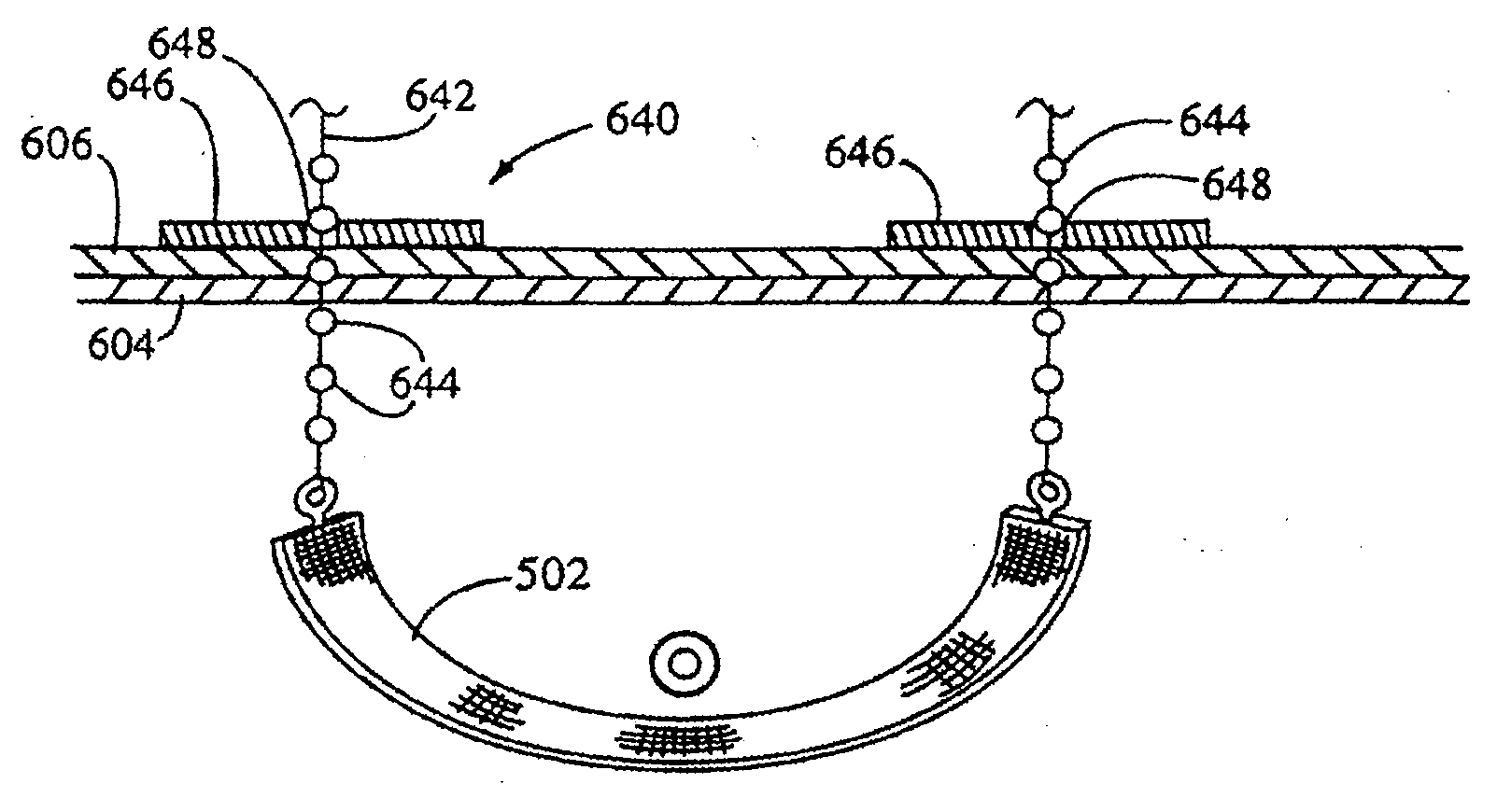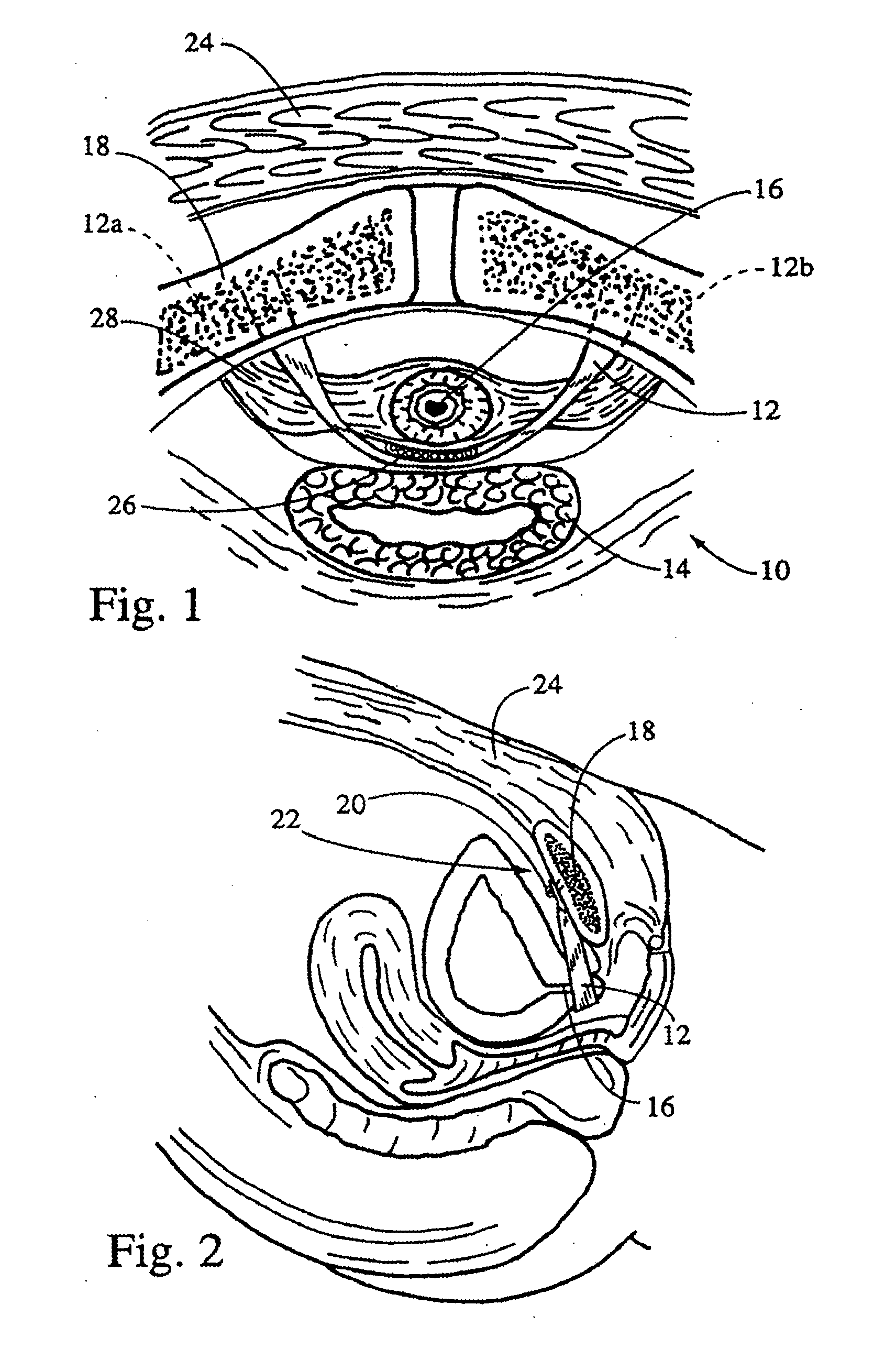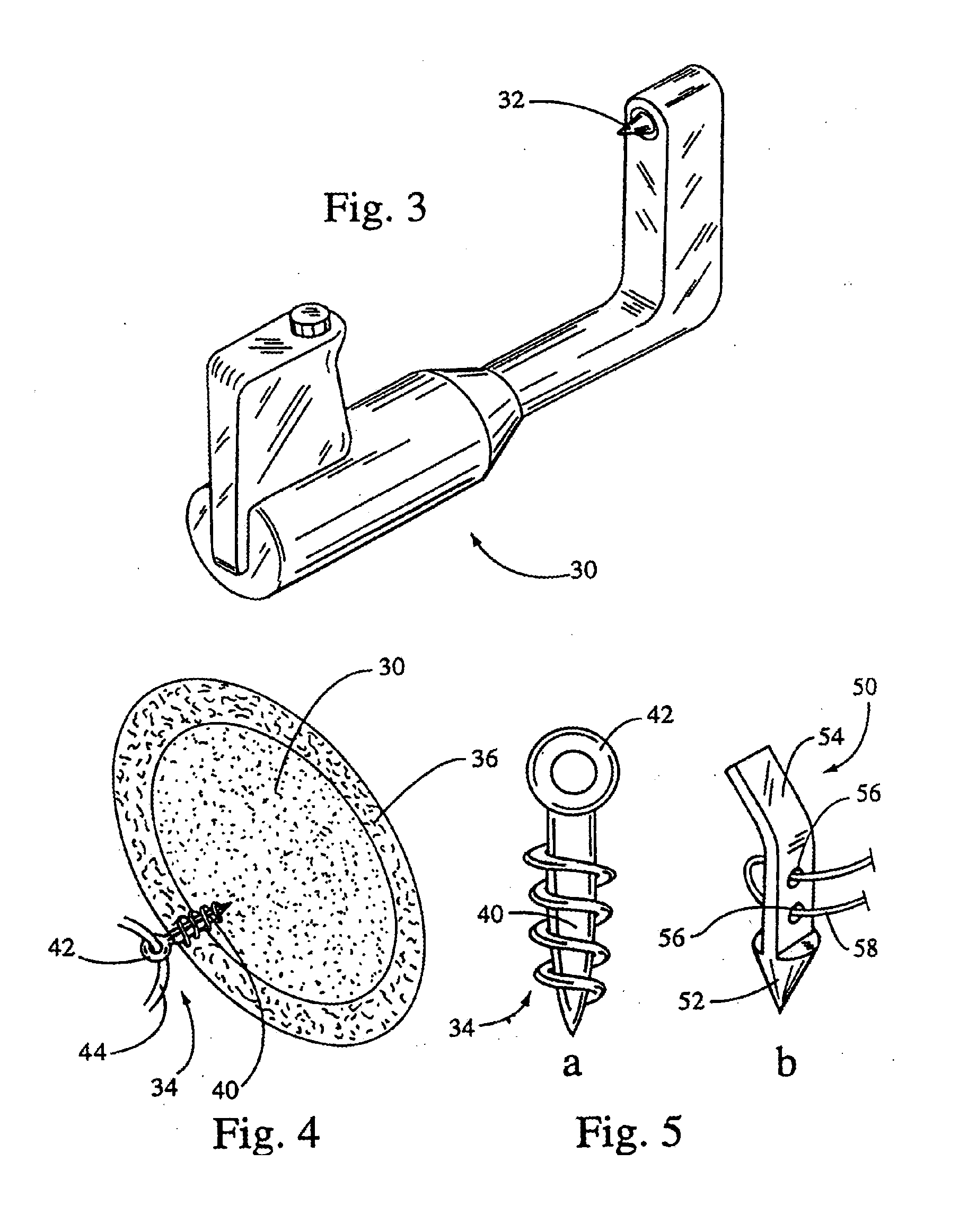Method of Treating Vaginal Prolapse
a vaginal prolapse and treatment method technology, applied in the direction of prosthesis, surgical staples, ligaments, etc., can solve the problems of difficult for surgeons the fixation device suffers from numerous drawbacks, and the surgeon is difficult to accurately deploy the insertion device, etc., to achieve the effect of reducing the difficulty of removing and adjusting such devices
- Summary
- Abstract
- Description
- Claims
- Application Information
AI Technical Summary
Benefits of technology
Problems solved by technology
Method used
Image
Examples
first embodiment
Referring now to FIG. 21, there is shown the use of the system 800 to deploy the implant 802 via the deployment mechanism 804. In the procedure illustrated, such implant 802 is being deployed through an incision 822 formed within the vaginal wall 820 to thus enable a urethra 824 to ultimately become supported thereby. To that end, it is contemplated that such deployment may take one of two forms. the anchor mechanisms 808 housed within the deployment mechanism are compressed to assume a first deployment configuration and, once released therefrom, assume an expanded configuration that enables the same to remain fixed in position. Alternatively, the anchor mechanisms may simply assume a single state and deploy directly into tissue at a desired surgical site. As will be appreciated, however, other techniques will be readily apparent to those skilled in the art for use in deploying the anchor mechanisms of the present invention.
In this regard, the procedure depicted in FIG. 21 represen...
second embodiment
Referring now to FIGS. 32 and 32a, there is shown a percutaneously delivered support mechanism operative to impart urethral support for the treatment of incontinence. As illustrated, the implant 340 is comprised of an elongate backing or sling portion 342 having anchoring mechanisms or elements 344 formed on the respective ends thereof. As per the embodiment discussed with respect to FIGS. 27-31, the implant 340 is positioned within the vagina and underneath the urethra extending thereabove. The anchoring elements 344 are thus percutaneously compressed into the vagina which causes the implant 340, and more importantly the support portion 342 thereof to remain secured into position and provide support to the urethra 312. With respect to such anchoring mechanisms 344, the same may take any of those anchoring mechanisms disclosed herein suitable for such procedure, and in particular those disclosed in FIGS. 9 and 10. As will be readily appreciated by those skilled in the art, the impla...
embodiment 700
Referring now to FIGS. 19-19c, and initially to FIG. 19, there is shown an additional embodiment 700 of an anchoring system for securing a suture-like cord or line 508 at a desired location. As per the embodiments depicted in FIGS. 17 and 18, the embodiment shown includes an anchor plate 702 having at least one, and preferably two to four, channels 704 extending therethrough for receiving suture-like cords 508. As per the aforementioned embodiments, the anchor plate 702 may likewise be secured into position with a fastener mechanism or, alternatively, merely be positioned at a desired site upon fascia or soft tissue with the ultimate tension imparted thereto by the sutures 508 held thereby causing the same to remain resident at such site. As to the embodiment shown, the anchoring plate 702, once positioned, is operative to receive the suture line or lines 508 through the channels 704 defined thereby. As more clearly illustrated in the cross-sectional view of FIG. 19a, the suture-lik...
PUM
| Property | Measurement | Unit |
|---|---|---|
| area | aaaaa | aaaaa |
| surface area | aaaaa | aaaaa |
| compress | aaaaa | aaaaa |
Abstract
Description
Claims
Application Information
 Login to View More
Login to View More - R&D
- Intellectual Property
- Life Sciences
- Materials
- Tech Scout
- Unparalleled Data Quality
- Higher Quality Content
- 60% Fewer Hallucinations
Browse by: Latest US Patents, China's latest patents, Technical Efficacy Thesaurus, Application Domain, Technology Topic, Popular Technical Reports.
© 2025 PatSnap. All rights reserved.Legal|Privacy policy|Modern Slavery Act Transparency Statement|Sitemap|About US| Contact US: help@patsnap.com



